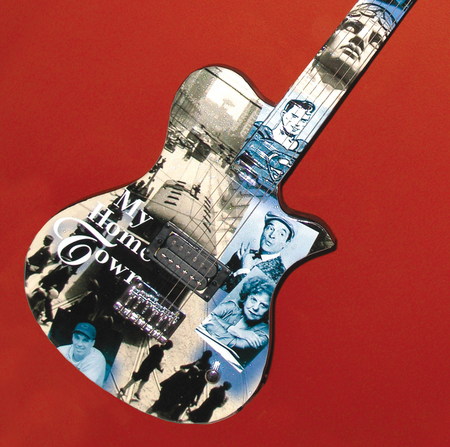Specialty media, which give digital graphics a distinctive look, have seen exponential growth. This isn’t by accident. Metallic, reflective and etched-glass films, and silver and gold and florentine leaf – even digitally printed, carbon-fiber media – offer more options.
Unfortunately, many print providers shy away from these applications and products, even though specialty digital media offer inkjet prints. Why do you sell more glossy overlaminate than any other version? Generally, people like the bright-shiny-car look. This also holds true for images printed on specialty media.
Specialty products, listed specifically as inkjet receptive, differ from more-familiar products such as those intended for computer-aided cutting. Generally, most specialty products comprise polyester, vinyl-based films and some urethane films as the face sheet. If you’re in the digital-printing business, I’m sure you’re familiar with inkjet printing’s fickleness.
Generally, polyester and urethane-based products aren’t solvent-inkjet receptive unless they’ve been treated with a receptive layer or have a vinyl-film face. The former is better.
Vinyl products accept digital inks better during the standard workflow due to their inherent chemical makeup. Durability and application performance will vary.
Metalized products, such as solid silvers, gold, florentine leaf and brushed films, often include a poly¬ester layer, which ultimately gives the product its overall look and feel. Such polyester-based prod¬ucts, which typically last one to two years, are more rigid and less conformable.
Advertisement
Metallic products incorporate small flakes, which provide sparkle within the film. Generally, cast films last up to five years and are highly conformable. Digital-solvent inks, nicely suited to specialty media because they’re translucent, allow the special media look your customer will learn to love.
Expanding applications
Specialty media can be found in such applications as POP, tradeshow, window and even vehicle graphics. Various special-effect films allow designers and installers a way to marry graphic design and functionality. Reflective films, printed and computer-cut into overlay decals, provide a safety emphasis or a design impact. The metallic cast products are used for applications that require a higher degree of conformability or durability.
Digital imaging may be limited on special-effect films. Examine the media’s look and color before printing. A four-color, beach-scene image, for instance, won’t look correct on a goldleaf film; the blue sky will likely turn a green hue. Remember, digital inks are translucent; therefore, the background greatly affects the overall intended look. For goldleaf, select a solid-color logo or text.
Protect your image
I recommend laminating all digitally printed images for durability and scratch resistance. When selecting a cast overlaminate for cast special-effect film, expect up to five years of durability. A polyester-based, cast-laminate media won’t provide equivalent durability. Check with the vendor to determine a polyester film’s true durability.
Advertisement
I commonly see digitally printed, high-traffic graphics not being laminated. Even a barrier wall in a mall will be subjected to physical abuse. Protecting your image with an overlaminate will assure your customer is happy for the life of the graphic.
The challenge
Print an image on a standard white film, as well as on a specialty film, and show them to 10 people. Their reaction should provide al the necessary proof as to whether you should consider adding specialty media.


 Paula Fargo2 weeks ago
Paula Fargo2 weeks ago
 Real Deal1 week ago
Real Deal1 week ago
 Photo Gallery2 weeks ago
Photo Gallery2 weeks ago
 Projects1 week ago
Projects1 week ago
 News1 day ago
News1 day ago
 Business Management1 week ago
Business Management1 week ago
 Projects19 hours ago
Projects19 hours ago
 News1 week ago
News1 week ago
















